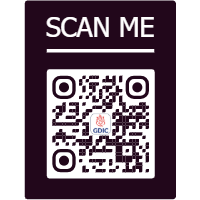
Discover the signs of low testosterone, from reduced sex drive to fatigue. Learn about testing methods and explore treatment options like TRT and lifestyle adjustments to improve well-being.
What are the Symptoms of Low Testosterone? Test & Treatment
Testosterone is a vital hormone that plays a key role in male health that influences sexual development, muscle, bone mass, mood regulation, and energy levels.
While testosterone levels naturally decline with age some individuals experience a more pronounced drop known as low testosterone or hypogonadism.
This condition can significantly impact quality of life but can often be managed with proper diagnosis and treatment.
Understanding Low Testosterone
It is defined as having levels below 300 nanograms per deciliter (ng/dL). While testosterone is produced in males and females, this article focuses on symptoms and treatment for males assigned at birth. Causes of low testosterone include ageing, medical conditions, lifestyle factors, or injury to the testicles.
Symptoms of Low Testosterone
Low testosterone symptoms can manifest in various ways that can affect physical, emotional, and sexual health. Below are the most common symptoms:
1. Reduced Sex Drive (Low Libido)
Testosterone is essential for maintaining a healthy sex drive. A significant drop in testosterone levels can result in a noticeable reduction in libido, which may be more pronounced than the natural decline associated with ageing.
2. Erectile Dysfunction
Testosterone aids in achieving and maintaining erections by stimulating nitric oxide production, which triggers the chemical processes necessary for an erection. Men with low testosterone may experience difficulty achieving erections or fewer spontaneous erections during sleep. However, erectile dysfunction can also stem from other health issues like diabetes or high blood pressure.
3. Fatigue and Low Energy
Persistent fatigue despite adequate sleep is a hallmark symptom of low testosterone. Individuals may feel less motivated to exercise or engage in daily activities.
4. Decreased Muscle Mass
Testosterone contributes to muscle development. A decline in testosterone levels can lead to reduced muscle mass, although its impact on muscle strength and function varies among individuals.
5. Increased Body Fat
Low testosterone may cause an increase in body fat and conditions like gynecomastia (enlarged breast tissue), resulting from an imbalance between testosterone and estrogen levels.
6. Decreased Bone Density
Testosterone plays a critical role in bone health by promoting bone tissue production. Low levels can lead to osteoporosis, increasing the risk of fractures.
7. Mood Changes
Testosterone decline has been linked to mood disturbances such as irritability, low self-esteem, anxiety, depression, and dissatisfaction with life.
8. Cognitive Decline
Some studies suggest that testosterone decline may contribute to memory problems and difficulty concentrating (brain fog), although evidence on this link remains mixed.
9. Hair Loss
While hair loss is often hereditary or age-related, low testosterone may contribute to reduced body and facial hair growth.
10. Smaller Testicle Size
Testosterone is essential for the development and maintenance of testicle size. A significant drop in levels may result in smaller testicles over time.
11. Hot Flashes
Though less common, hot flashes characterized by sudden warmth, sweating, or reddening of the skin can occur with a decline in testosterone levels.
Causes of Low Testosterone
Several factors can contribute to low testosterone levels:
- Natural aging process
- Testicular injuries or infections
- Cancer treatments like chemotherapy or radiation
- Chronic illnesses such as kidney disease or cirrhosis
- Autoimmune diseases
- Obesity or metabolic syndrome
- Alcohol use disorder
- Pituitary gland disorders
- Certain medications (e.g., steroids)
Diagnosing Low Testosterone
Diagnosis typically involves a blood test called a serum testosterone test to measure hormone levels. Additional tests may include:
Luteinizing hormone (LH) tests to assess pituitary function
Blood prolactin level tests to identify hormonal imbalances
Normal testosterone levels range between 450–600 ng/dL; anything below 300 ng/dL is considered low.
- Testosterone Test (Book Now)
- Testosterone free and total (Book Now)
- Testosterone Test at Home (Book Now)
Treatment Options for Low Testosterone
1. Testosterone Replacement Therapy (TRT)
TRT is a common treatment for managing symptoms of low testosterone.
It is available in various forms:
- Skin gels: Widely used due to ease of application.
- Injections: Administered at regular intervals.
- Skin patches: Applied daily.
- Subdermal pellets: Implanted under the skin for long-term release.
- While TRT can improve sex drive, energy levels, muscle mass, and bone density, it requires lifelong commitment as stopping therapy may cause testosterone levels to drop again.
2. Lifestyle Changes
Certain lifestyle modifications can help manage symptoms:
- Maintaining a healthy weight
- Regular exercise, particularly strength training
- Reducing alcohol consumption
- Managing stress through mindfulness or therapy
3. Addressing Underlying Conditions
If low testosterone results from another medical condition (e.g., obesity or thyroid disorders), treating the root cause may help restore hormone balance.
Risks and Considerations for TRT
While TRT can alleviate symptoms effectively, it’s not without risks. Potential side effects include:
- Increased risk of blood clots
- Worsening sleep apnea
- Acne or oily skin
- Enlarged prostate
Get the Right Assistance for a Healthier Lifestyle!
Low testosterone can significantly impact physical health, emotional well-being, and quality of life. Are you seeking one of the best Testosterone Tests in Delhi NCR?
If you suspect you have symptoms of low T, consult a healthcare professional for proper diagnosis and personalized treatment options. Rely on Ganesh Diagnostic and Imaging Centre Pvt. Ltd. for the right diagnosis.
With consistent management, whether through TRT or lifestyle changes you can alleviate symptoms and improve your overall health trajectory effectively!
FAQ’s
Q. What are common symptoms of low testosterone?
Reduced sex drive, erectile dysfunction, fatigue, decreased muscle mass, increased body fat, and mood changes are common.
Q. What causes low testosterone levels?
Aging, testicular issues, chronic illnesses, obesity, and certain medications can contribute to low T.
Q. How is low testosterone typically diagnosed?
A blood test called a serum testosterone test is used to measure hormone levels for diagnosis.
Q. What are the main treatment options for low T?
Testosterone Replacement Therapy (TRT) via gels, injections, patches, or pellets is a primary treatment. Lifestyle changes can also help.
Q. Is TRT a lifelong treatment?
Yes, TRT usually requires a lifelong commitment to maintain healthy testosterone levels and manage symptoms.















